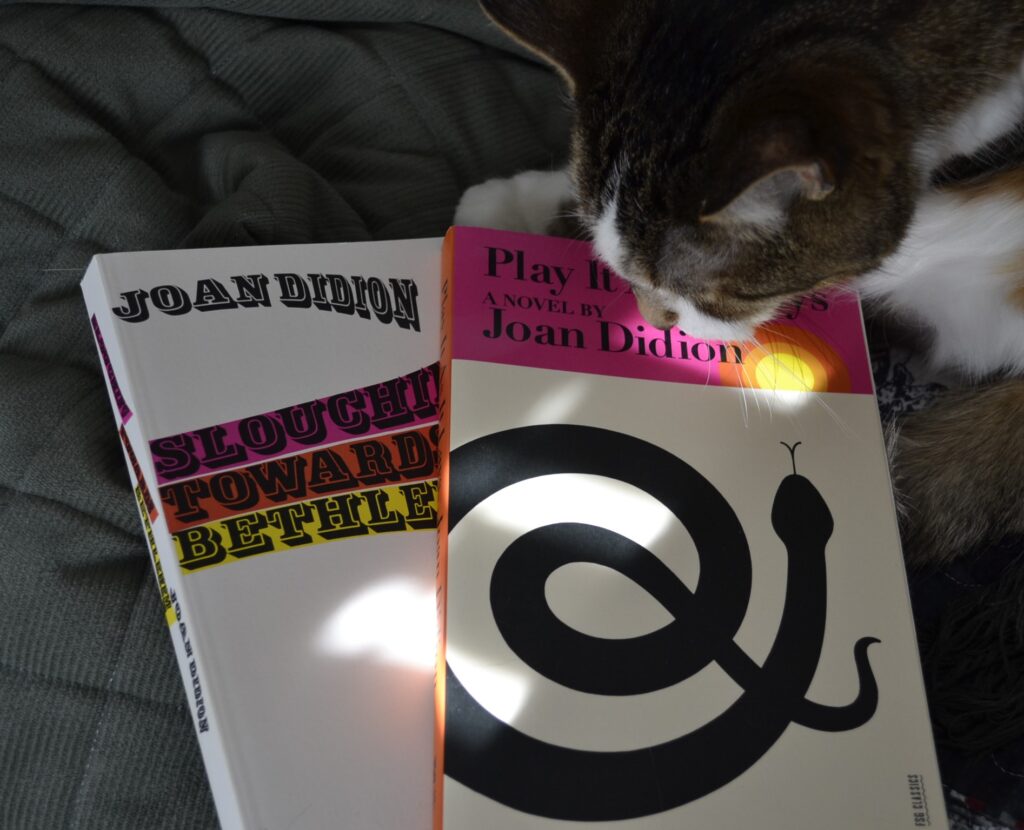The Screen’s First Appearance
Bandersnatch is finally starting to get back to her usual self. Today marks the first day she’s attended all of her regular mealtimes and has actually begged for playtime. However, to get here we’ve had to go through two enemas, three sets of x-rays, three sets of subcutaneous fluid, multiple injections of medication, two rounds of pills, and, all-told, seven visits to the vet including one to the virtual vet. She’s exhausted and so are we. We’re also left confronting the shambles of ordinary life that didn’t get tended to while we were doing our utmost to get her better. Chores. Work that is now rush work.

To try to break up the overwhelming feeling of suddenly being transformed into Sisyphus, we decided to take the screen door from the shed for the year, clean it off, and give the girls a taste of the spring breezes. It was especially heartening to see Bandersnatch excited gallop up the door to watch the chipmunks and red-wing blackbirds.
It was a small moment, but it really helped work seem not as bad. Because nothing can quite seem as bad when my sick child is on the mend and enjoying the sunshine.

Versatility
Joan Didion is one of my favourite writers and one of the reasons for that is because she’s so versatile. She wrote personal essays, screenplays for films, theatre pieces, and articles. She had such a long and interesting career. She’s also influenced how I examine prose articles, and it was her article on keeping a notebook that inspired the start of my commonplace book. I’ve even already reviewed some of her work here before.
When it comes down to it, even writing one style of prose takes years of mastery and study. So the writer that can do more than one thing in more than one style and do each of those things well is especially rare. I’ve never been disappointed by Didion, and I hope you won’t be either.

Fiction
I’ve decided to review two of Didion’s works (partially because they have been waiting in my to-review stacks for a while, and partially because this is post #222). One novel and one collection of non-fiction essays. I’ll start with the novel — 1970’s Play it as it Lays.
The plot follows Maria Wyeth, an actress in her early thirties whose star is on the wane after a failed marriage and time spent aimlessly drifting from one movie set to the other, driving along desert highways, and getting lost in the Hollywood scene of the last of the sixties. Didion’s stark prose gives us a story in fits and starts, spread out like an arid vista. The structure is not a neat one, instead forming looping threads meant to mimic memory as Wyeth seeks to trace her own decline and eventual route to a psychiatric hospital in Los Angeles. It’s Didion’s style choices that make this novel the masterpiece that it is. The plot itself is not something that we haven’t seen before, but the execution is definitely singular.
The book is rich in themes and symbolism, capturing the feeling of the disillusionment of the fading golden age of Hollywood. The dream is over and, instead, there is desolation and a legacy of broken and twisted possibilities. It’s definitely a book to chew on and that invites the reader to digest it more than once.

Non-Fiction
Slouching Towards Bethlehem from 1968 is probably the most famous of Didion’s works and is composed of non-fiction essays previously published in (mostly) The Saturday Evening Post. Didion discusses her experiences growing up in California, and what it looked like in the 1960s.
The titular essay is a famous account of the Haight-Ashbury district during the height of the counterculture movement, and it definitely shines as the primary reason to pick up this book. Didion’s voice is distinctive and she does not mask her presence, nor does she make it onerous to the reader. She merely details what she’s seen and her thoughts on what is going on around her in way that allows the reader to draw their own conclusions and form their own opinion. She is engaging in a conversation, not trying to turn others towards her thinking.
She writes of the gritty, horrible realities of the movement and life at Haight-Ashbury, including the fact that the district was full of runaway children living in squalor or being abused. Drugs were rampant and there were plenty of people abandoning all sense of morality and responsibility in order to singularly focus on their own journeys. It is a harsh portrait, but it is not without sensitivity or without the compassion for those that the movement was failing and the vulnerable it wasn’t protecting.
There are other essays that I also enjoyed immensely such as ‘Los Angeles Notebook’, ‘On Keeping a Notebook’, and ‘Some Dreamers of the Golden Dream’.

Fingers Crossed
I’m hoping that life takes a modicum of pity on us and gives us a bit of a break for a while. We’ve had some bad luck in the last six months with some expensive car repairs and house fixes, plus all of the vet bills now coming in. I know that it’s so much better than it could have been, but at the same time, I feel a bit battered by the fates at this point.
My lovely spouse is going to try to take some time off soon and we sorely need it. Burn out is such an ominous presence when you work freelance. Sometimes it can feel like you’re fine until you’re not and then it’s so difficult to crawl out of the hole you find yourself in. I’m hoping some rest will help stave off the worst of the overworked feeling we’re both labouring under currently.

